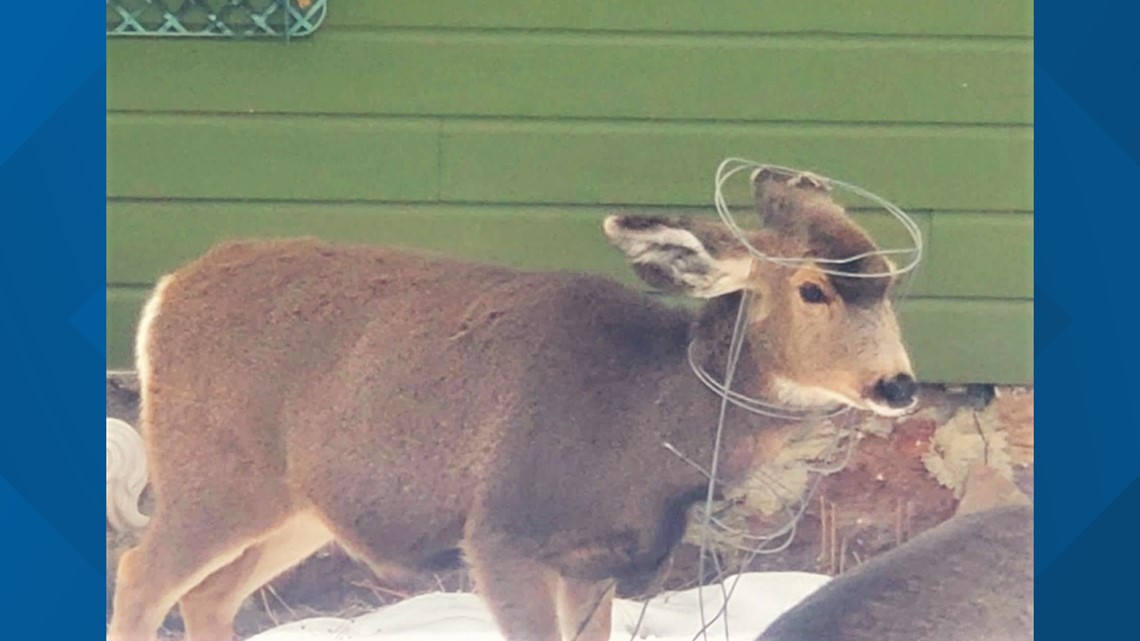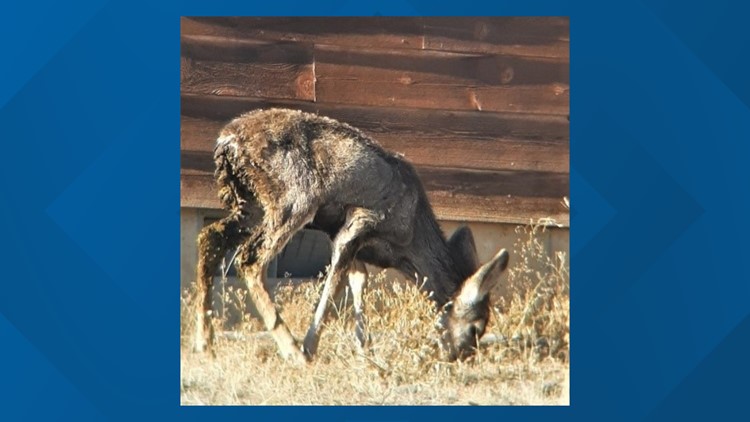BOISE, Idaho — The Idaho Fish and Game is reminding Gem State residents not to feed wintering deer -- even with good intentions during the colder winter months, feeding mule deer is often harmful for Idaho's mule deer.
While some mule deer have changed their habits in order to live in Idaho's growing list of urban environments and eat non-native foods, Idaho Fish and Game (IDFG) said the human feeding creates possibilities for problems severely impacting their survival.
In a news release Thursday, IDFG said urban deer's most common cause of illness is related to their nutrition. IDFG said reports of sick deer in Salmon and other urban and suburban portions of Idaho happen often during the winter and early spring.
IDFG said although residents have shared their concern of ill deer possibly suffering from Chronic Wasting Disease (CWD), the agency confirmed CWD has only been detected in Unit 14 -- roughly located between Whitebird and Riggins.
Currently, IDFG estimates CWD prevalence is less than 2% in the local deer population and lower in elk populations. IDFG also stated that maintaining lower wildlife population density has shown to slow the spread of CWD.
"Poor nutritional condition in mule deer is caused by disruptions to their highly specialized digestive system," IDFG Wildlife Technician Jonathon Prokott wrote in a release. "Specifically, human introduced foods like bird seed, alfalfa cubes, deer blocks, and livestock feed can disrupt the delicate balance of their stomach microbiome."
IDFG said it euthanizes or disposes of "dozens" of dead deer in Idaho each year due to supplemental feeding within city limits.
Deer depend on bacteria to break down their food. Their bacteria changes throughout the year as their diets change with differing qualities of forage and composition of what they eat. IDFG said the bacterial change can take multiple weeks and deer do not adapt well to sudden changes in their diet.
Due to the poor adaption, it becomes difficult or impossible for the deer to digest foods with high-nutritional value. Without digestion, the deer often starve to death with a full stomach, IDFG said.
Not only do IDFG examinations of deer carcasses find animals with full stomachs, but they also discover the deer have degraded bone marrow. If the condition is to the point where the bone marrow is clear yellow or red, IDFG said it indicates "severe nutritional deficiency," compared to the marrow being pink or white colored when healthy.
"Fawns are particularly susceptible to dying from sudden changes in diet," Prokott wrote. "They are still in a state of rapid body growth and have little to no body fat reserves to compensate for the added stress. When their stomach microbiota is disrupted by unnatural foods, they are forced to try and maintain their energy levels by digesting internal fat. Fawns do not have extensive fat reserves, this means they begin to digest their bone marrow and eventually will suffer organ failure."
IDFG said humans feeding deer typically encourages the wildlife to move in higher numbers, which can result in damage and problems for people, their pets and the deer themselves.
Individuals with good intentions sometimes think supplying a different food source will keep the local deer from damaging their plants. However, on top of numerous nutritional issues and higher congregation numbers, IDFG said feeding even a couple deer can lead to more looking for food handouts and high numbers in small areas -- increasing the risk of diseases spreading throughout the population.


Mountain lions are also attracted to urban areas where deer come together when they are fed and the supplemental feeding increases the chances of more dangerous wildlife around homes, according to IDFG's news release.
"While deer may look harmless, people need to remember that they are wild animals and can be unpredictable," Prokott wrote. "There are a wide range of opinions regarding deer in urban areas, however, most will agree that healthy wildlife is important. Consideration of all factors involved is critically important to the health of our deer herds and their impacts on our community."
Watch more Local News:
See the latest news from around the Treasure Valley and the Gem State in our YouTube playlist:



